Look at this beauty! This stunning upside down orange cake is bursting with citrusy flavour and topped with a cloud of light, airy diplomat cream. It's the perfect dessert to impress your guests or enjoy for a special occasion.
Imagine soft, buttery cake infused with vibrant oranges, caramelized to gooey perfection. Now picture it topped with a cloud of light, airy diplomat cream, smooth and dreamy. This upside down orange cake isn't just a dessert, it's an experience!
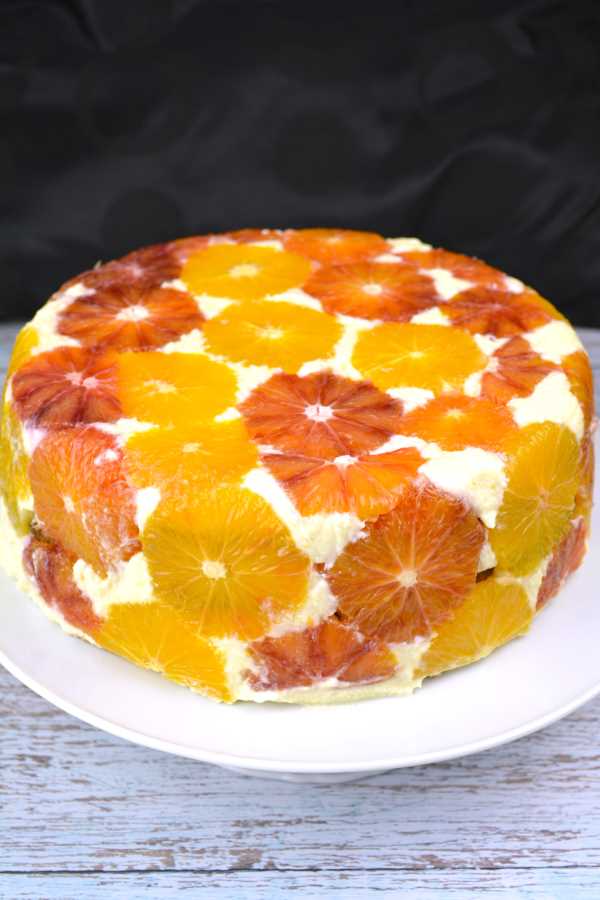
Jump to:
Why We Love This Cake?
There are many reasons why people fall in love with the upside down orange cake with diplomat cream, and it goes beyond just the taste (which is admittedly phenomenal). The contrast of textures plays a big role. The fluffy cake melts in your mouth, while the orange slices offer a chewy delight. The airy diplomat cream adds a lightness to the experience.
The upside-down design with the vibrant orange slices creates a stunning dessert that is sure to wow guests. Like my black forest cake, it's a feast for the eyes before you even take a bite. The contrast of the orange slices against the pale cake and white cream is aesthetically pleasing and inviting.
While not the simplest cake, the upside-down method and straightforward ingredients make it achievable for home bakers of all skill levels. You can customize the sweetness, experiment with different orange varieties, and flavour the diplomat cream in various ways, keeping things fresh and interesting.
Ingredients
The upside-down orange cake with diplomat cream is a visual and culinary masterpiece, and its magic lies not just in the final presentation, but in the careful selection of its ingredients.
Let's dive into the key ingredients and the roles they play.
Upside Down Delight
- Oranges: The star of the show! Their vibrant acidity and sweetness create a refreshing base. You can also experiment with blood oranges for a deeper colour and tangier flavour.
- Sugar: Sugar coat the oranges and infuse the cake with a rich sweetness. Experiment with different sugars for subtle flavour variations.

For the Soft and Fluffy Cake
- Flour: All-purpose flour forms the base of the cake, providing structure and fluffiness.
- Eggs: They bind the ingredients together and contribute to the rise and texture of the cake. Separating the eggs and whipping the whites to stiff peaks adds additional airiness.
- Sugar: Granulated sugar sweetens the cake.
- Baking Powder: Baking powder or baking soda help the cake rise and achieve its fluffy perfection.

Diplomat Cream
- Milk: Used to make the crème patisserie base, a custard that provides the foundation for the cream.
- Egg yolks: The yolks enrich the custard and thicken it with their natural lecithin content.
- Heavy cream: Whipped to stiff peaks, it incorporates air and creates the light and fluffy body of the diplomat cream.
- Sugar: Sweetens the cream, balancing its richness and complementing the citrusy notes.
- Vanilla extract: A touch of vanilla adds a warm and comforting flavour to the diplomat cream.
- Gelatine: This ingredient stabilizes the whipped cream, preventing it from separating and ensuring a smooth, airy texture in the diplomat cream.
- Orange Zest: orange zest in the diplomat cream can elevate the citrus flavour.

How to Make the Upside Down Orange Cake?
Prepare the Oranges
I recommend starting this orange cake recipe by peeling and thinly slicing the oranges. Arrange them in a single layer in a bowl, sprinkle with sugar, and let them sit for at least 1 hour, or longer if possible.
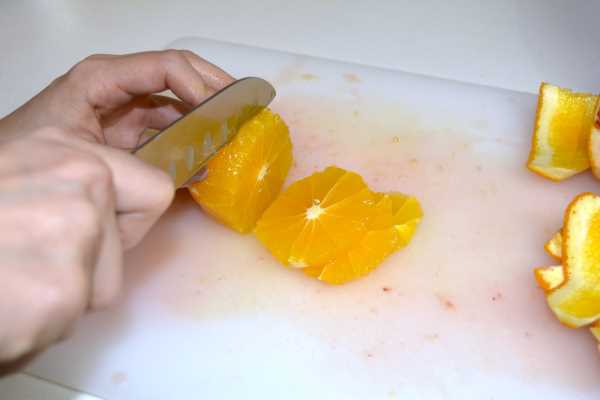
You will need this extracted juice for syruping the cake sponge.
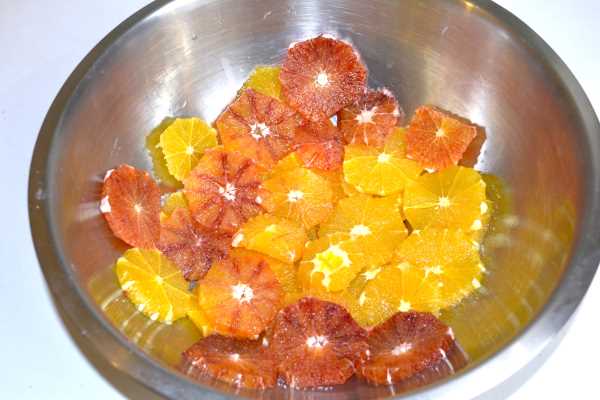
Make the Sponge Cake
The next step is to make a simple sponge cake from six eggs, sugar, and flour. First, separate the yolks from the whites and place them in separate bowls.
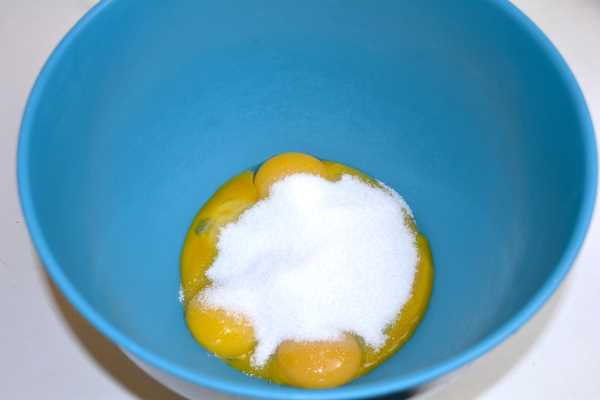
Mix the yolks and six teaspoons of sugar with an electric mixer until light and fluffy.
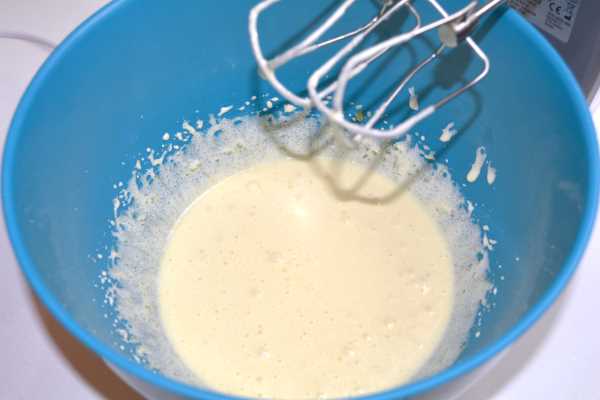
Add six tablespoons of flour and a teaspoon of baking powder to the egg yolk mixture. Gently whisk until the dry ingredients are fully incorporated and you have a smooth batter.
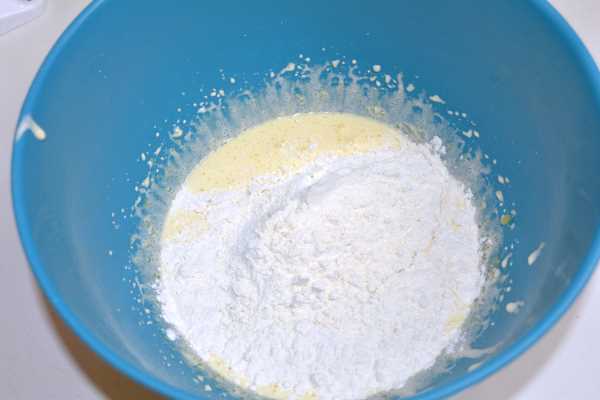
Separately, beat the large egg whites until they form stiff peaks (when you lift the whisk, the peaks hold their shape). Gently fold this foam into the egg yolk cream, taking care not to deflate it.
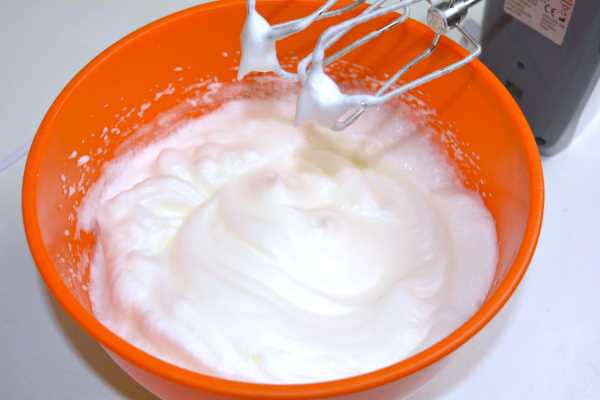
You can also mix this batter in a different order: first, whisk egg whites with sugar until stiff peaks form. Then, gradually whisk in one egg yolk at a time, until fully incorporated. Finally, gently fold in flour and baking powder.
Baking the Sponge Cake
Choose a baking springform pan for the cake and grease it with your preferred fat, such as butter, vegetable oil, or lard. I prefer the flavour of lard, but you can use what you like.
Pour the batter slowly and carefully into the shape. Use a gentle touch to level it evenly, avoiding any rough movements or shaking.
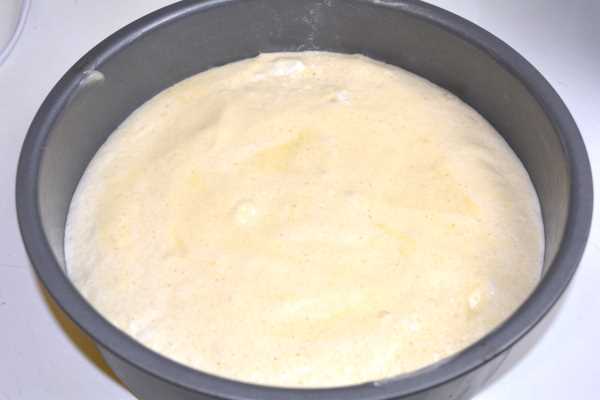
Place the baking dish in a preheated fan oven at 180°C (350°F) for 22-25 minutes, checking at the 20-minute mark. Do not open the oven door for the first 10 minutes. The cake is done when it has a golden brown colour and a toothpick inserted into the middle comes out clean.
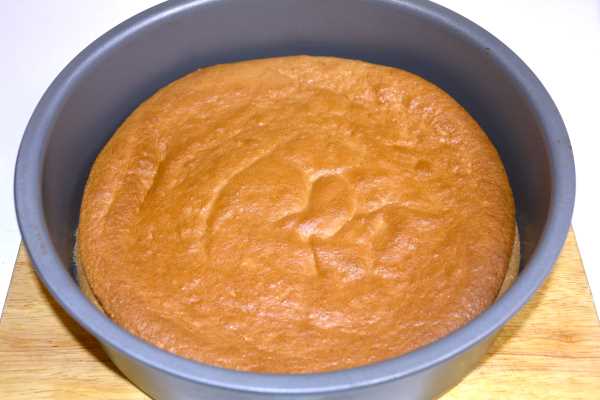
Let the cake cool completely.
How to Make the Patisserie Cream?
In a saucepan, heat the milk with a teaspoon of vanilla extract and three tablespoons of granulated sugar. Separately, in a bowl, whisk together three egg yolks with three tablespoons of granulated sugar until light and creamy.
Slowly whisk in 50 ml (¼ cup) of the warm milk into the egg mixture, then gradually add the remaining warm milk while whisking constantly. Next, whisk in three tablespoons of corn starch until fully incorporated.
Pour the mixture back into the saucepan over the warm milk and cook over medium heat, stirring constantly, until thickened and bubbly. Continue cooking for 1-2 minutes more to ensure the starch is cooked through.
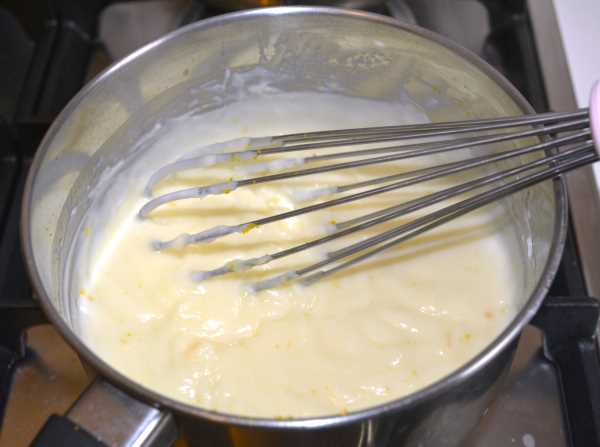
Add in one orange zest and let the pastry cream cool to room temperature. In a separate bowl, whip cold heavy cream to stiff peaks (soft peaks hold their shape when you lift the whisk, while stiff peaks hold their shape even when you turn the bowl upside down).
Gently fold the cooled pastry cream into the whipped cream until just combined, being careful not to overmix. Thus, the cream obtained is also called diplomat cream.
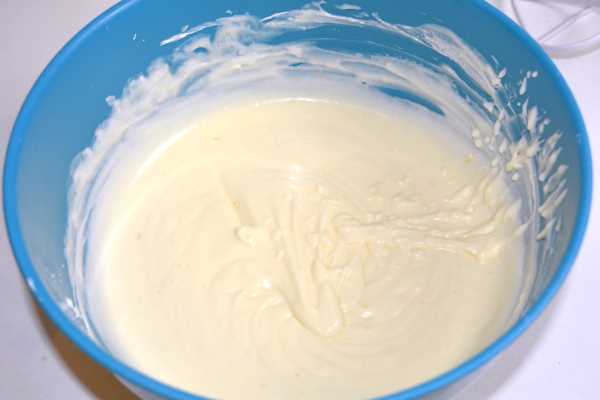
Assembly the Cake
Now comes the fun part: assembling the delicious upside down orange cake! Choose a round pot or dish, ideally a little wider than your sponge cake and about 10 inches (25 cm) high. My Dutch oven cast iron pot works perfectly for this, but any similar shape will do.
Make sure to line your pot with kitchen foil before assembling.
Arrange the orange slices on the bottom and bottom edge of the pot, alternating the colours of the orange slices for a decorative touch.
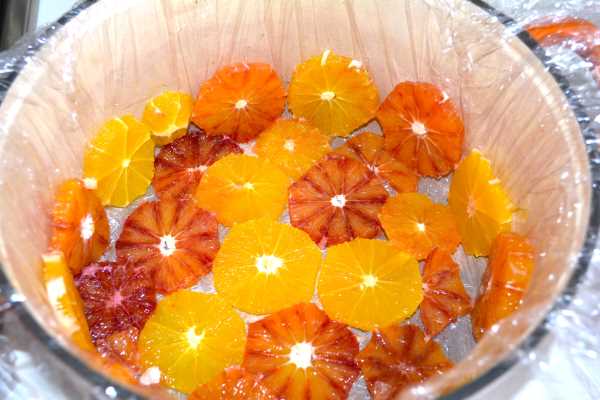
Spread a third of the cooled diplomat cream over the orange slices, using a spatula to ensure it fills the gaps and reaches the spaces between them.
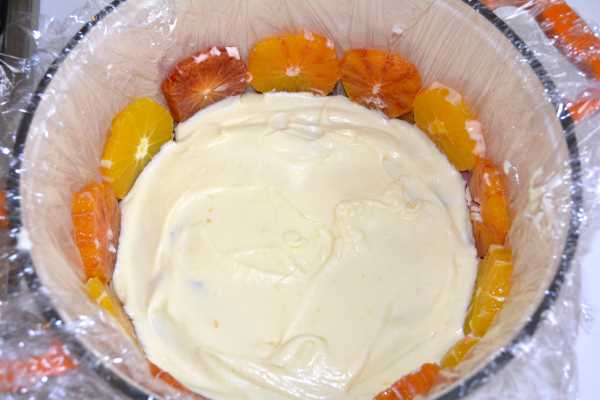
Place the sponge cake layer you previously cut into three thin pieces on top of the cream. Drizzle few spoonful of strained orange juice from the bowl with sliced oranges over the cake.
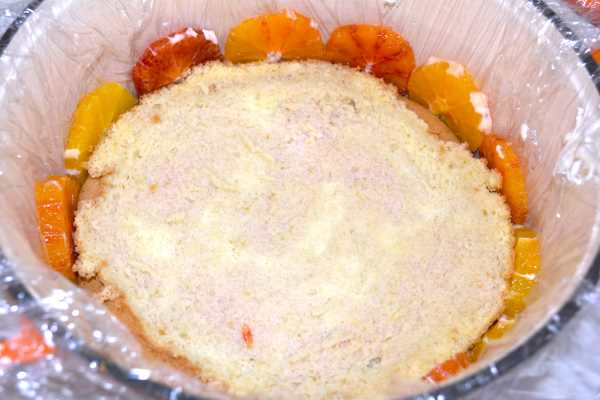
Repeat layering with diplomat cream, orange pieces, and sponge cake slices until all ingredients are used. Wrap the dish tightly in kitchen foil and refrigerate for 24 hours to allow the flavours to meld and the cake to set.
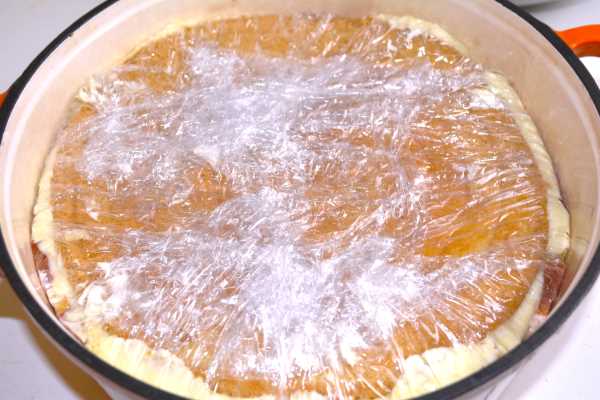
After a day in the refrigerator, carefully unwrap the foil and invert the cake onto a serving plate. Remove the pot and any plastic film, revealing your beautiful orange cake in all its glory.
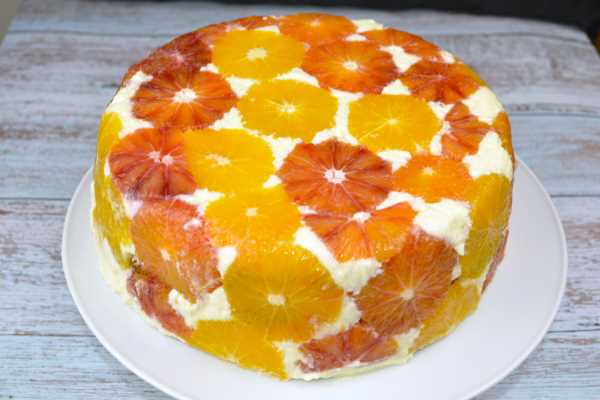
Now you have a stunning upside down orange cake ready to enjoy!
How to Serve the Orange Cake
There are many ways to serve your delicious upside-down orange cake, and the best method depends on your preferences and desired presentation. Present the cake on a beautiful cake stand or serving platter to elevate its visual appeal or use a decorative plate or dish that complements the colours and theme of the cake.
Cut the cake into wedges and serve on individual plates. Garnish with some additional orange slices and zest for a vibrant look and extra citrus flavour.
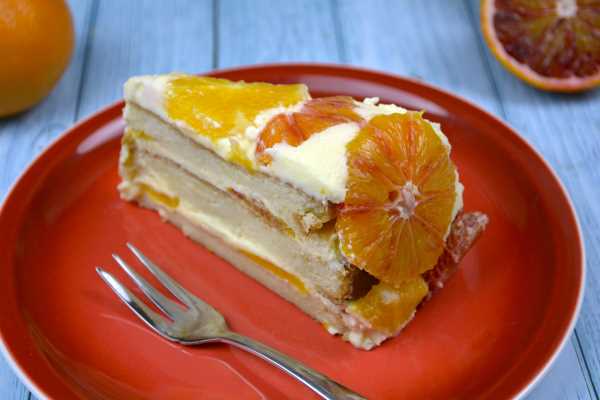
Consider the occasion and adjust the presentation accordingly. A simple dusting of powdered sugar might be perfect for a casual gathering, while a more elaborate garnish could be suitable for a special occasion.
This elegant orange cake effortlessly elevates any celebration, whether you're hosting a festive holiday gathering or an intimate birthday party. Here are some other cake recipes with a similar impact:
- Best Raspberry Cheesecake Recipe
- Gluten-Free Yoghurt Cake
- Floating Island Cake Recipe
- The Best Russian Cheesecake Recipe
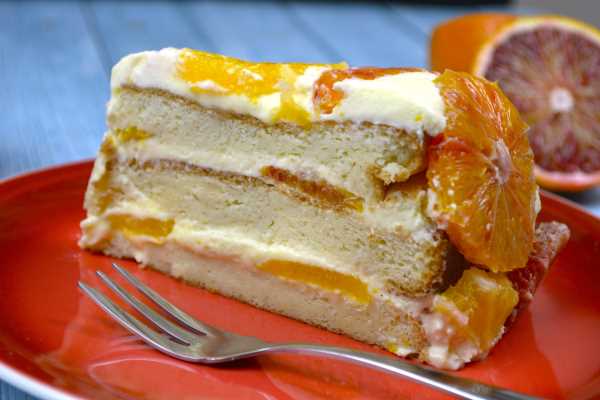
How to Store the Orange Cake
Store the orange cake tightly wrapped in plastic wrap or sealed in an airtight container in the refrigerator. This will protect it from drying out and absorbing other flavours. The cold temperature also slows down any bacterial growth. Leftover slices can be stored this way for up to 3-4 days.
Avoid storing the cake at room temperature for extended periods, as this can lead to spoilage. If you have leftover pastry cream or whipped cream filling, you can store it in an airtight container in the refrigerator for up to 2 days.
Upside Down Orange Cake
Equipment
- 1 springform cake pan
- 1 electric mixer
- 1 Dutch oven pot
- 3 bowl
Ingredients
For Sponge Cake
- 6 pcs eggs large, free-range
- 6 tablespoon flour
- 1 teaspoon baking powder
- 6 tablespoon sugar granulated
For Diplomat Cream
- 3 pcs egg yolks free-range
- 400 ml milk
- 1 teaspoon vanilla essence or aroma
- 6 tablespoon sugar granulated
- 3 tablespoon corn flour starch
- 1 pcs orange zest grated
- 500 ml double cream whipped cream
For Assembly
- 1.5 kg orange yellow and red
- 2 tablespoon sugar granulated
Instructions
- Peel and thinly slice the oranges. Arrange them in a bowl, sprinkle with sugar, and let them sit for at least 1 hour.
- Mix the yolks and sugar with an electric mixer, until light and fluffy. Add the flour with baking powder to the egg yolk mixture. Gently whisk until the flour are fully incorporated and you have a smooth batter.
- Beat the large egg whites until they form stiff peaks. Gently fold this foam into the egg yolk cream, taking care not to deflate it.
- Pour the batter slowly and carefully into the greased spring form tin. Use a gentle touch to level it evenly, avoiding any rough movements or shaking.
- Bake at 180°C (350°F) for 22-25 minutes. The cake is done when it has a golden brown colour and a toothpick inserted into the middle comes out clean.
- In a saucepan, heat the milk with vanilla extract and half of sugar.
- In a bowl, whisk together the egg yolks with the rest of sugar until light and creamy.
- Whisk in gradually 100 ml (½ cup) of the warm milk into the egg mixture, then add in the corn starch until fully incorporated.
- Pour the mixture back into the saucepan over the warm milk and cook over medium heat, stirring constantly, until thickened and bubbly. Continue cooking for 1-2 minutes more to ensure the starch is cooked through.
- Add in one orange zest and let the pastry cream cool to room temperature.
- Whip the heavy cream to stiff peaks. Gently fold the cooled pastry cream into the whipped cream until just combined, being careful not to overmix.
- Choose a round pot or dish, ideally a little wider than your sponge cake and line it with kitchen foil.
- Arrange the orange slices on the bottom and bottom edge of the pot. Spread a third of the diplomat cream over the orange slices, to ensure it fills the gaps and reaches the spaces between them.
- Place the sponge cake layer you previously cut into three thin pieces on top of the cream. Drizzle few spoonful of strained orange juice over the cake.
- Repeat layering with diplomat cream, orange pieces, and sponge cake slices until all ingredients are used.
- Wrap the dish tightly in kitchen foil and refrigerate for 24 hours to allow the flavours to meld and the cake to set.
- Carefully unwrap the foil and invert the cake onto a serving plate. Remove the pot and any plastic film, revealing your beautiful orange cake in all its glory.

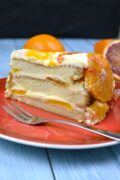


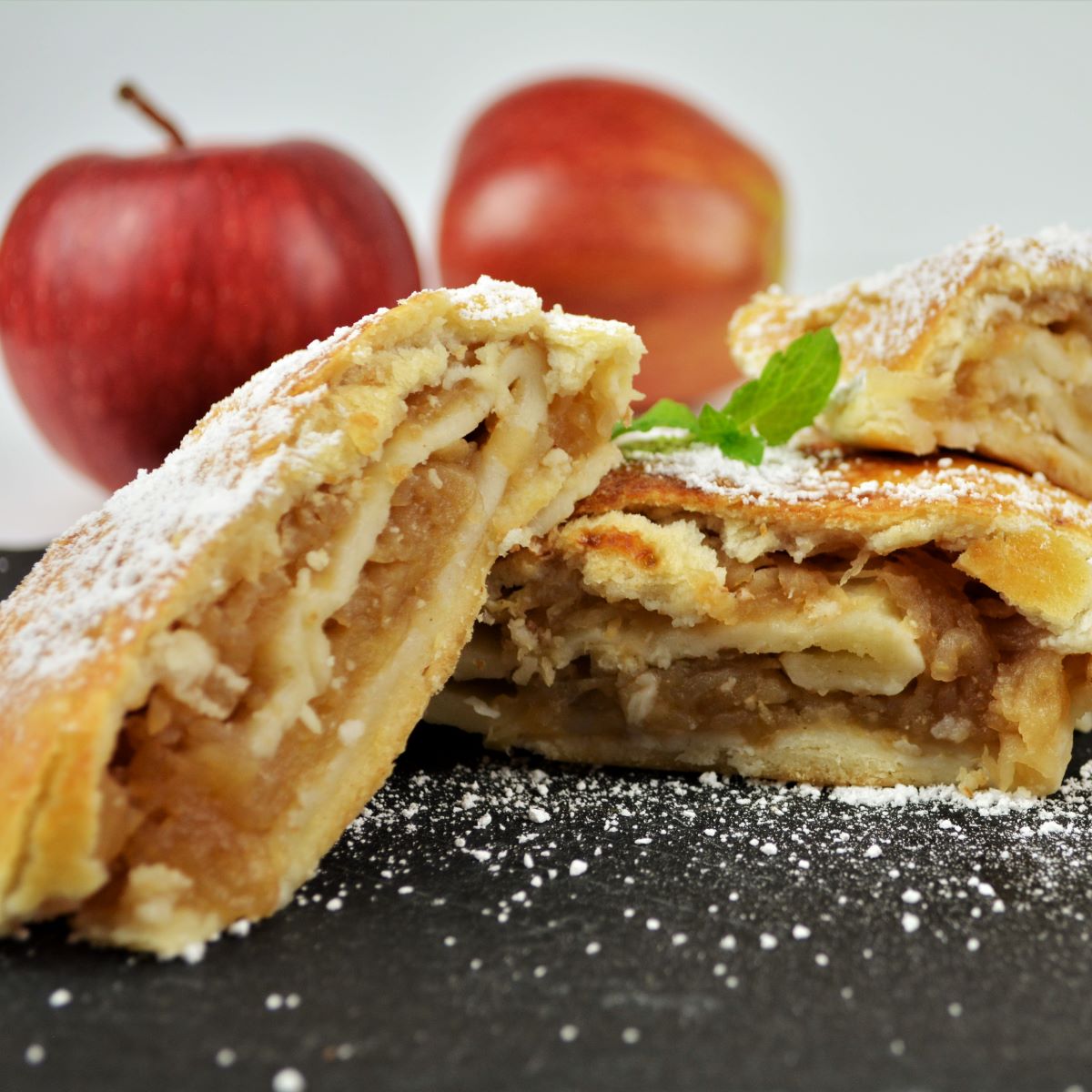


Leave a Reply